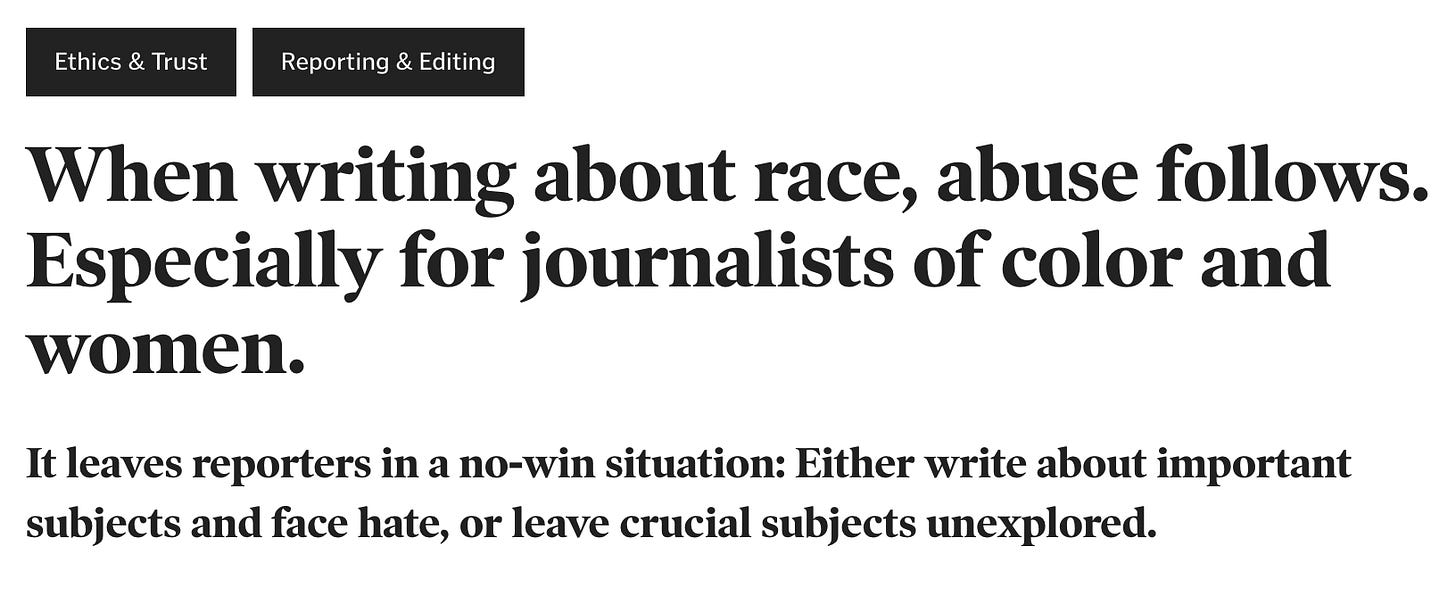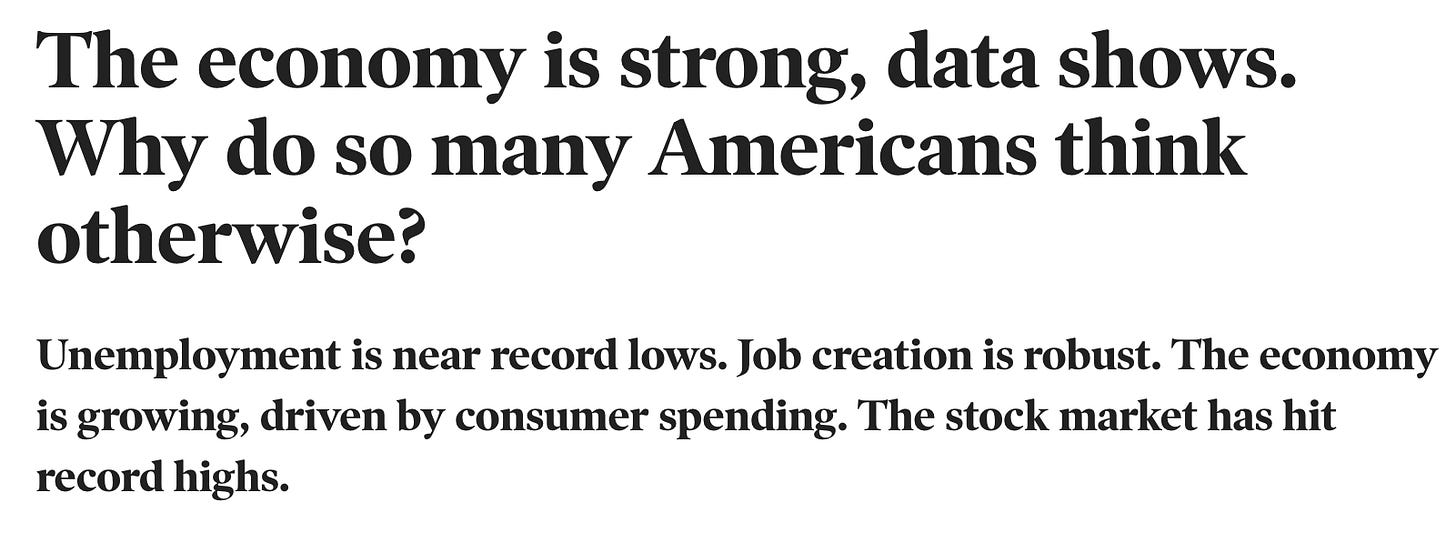Agenda-driven corporate media is turning our brains to sausage. So it’s critical that we start understanding how the sausage is made.
Enter Poynter: the journalistic sausage factory.
From its website:
The Poynter Institute is a global nonprofit that strengthens democracy by improving the relevance, ethical practice and value of journalism. Through teaching, publishing, convening, fact-checking and media literacy, Poynter creates a crossroads where communities come together to use journalism to confront society’s complex problems.
Poynter has long represented the gold standard for the professional development of journalists, For the last 50 years, Poynter has worked to bolster local news infrastructure and sustainability. In the last year, we’ve trained thousands of local journalists and their newsrooms in craft, digital audience and revenue growth, innovation, diversity, equity and inclusion, and effective management…
Sponsors of the New Gold Standard
Let’s first take a look at how we arrived at the “the gold standard for the professional development of journalists.”
From Wikipedia:
The Poynter Institute for Media Studies is a non-profit journalism school and research organization in St. Petersburg, Florida, United States. The school is the owner of the Tampa Bay Times newspaper and the International Fact-Checking Network.[2][3] It also operates PolitiFact.[4]
Craig Newmark (founder of Craigslist) is a board member of the Poynter Foundation and donated $1 million to it in 2015.[9][10] In 2015, Poynter received $382,997 from the Bill & Melinda Gates Foundation to influence news coverage of global health initiatives.[11] In 2017, the Poynter Institute received $1.3 million from the Omidyar Network and the Open Society Foundations in order to support new projects in three main areas: fact-checking technology, impact tracking, and financial awards through innovation grants and crowdfunding matches…
In 2018, the Poynter Institute began a cooperation with the content recommendation network Revcontent, to stop misinformation and fake news in articles[13][14][15] supplying Revcontent with fact-checking provided by their International Fact-Checking Network.[16] …
In March 2018, Google.org appointed Poynter Institute as the leader of their MediaWise program to equip middle and high school students to better differentiate online news and information. Google funded this with a $3 million grant.[18]
…In 2020, after receiving funding from Facebook, the Poynter Institute expanded the MediaWise program with a national media literacy program called MediaWise Voter project (#MVP). Its goal was to reach 2 million American first-time voter college students, helping them to be better prepared and informed for the 2020 elections.[25] *emphasis mine
Poynter therefore has an enormous role in determining what is written, what is published, what is considered fact and who is deemed credible. It also powerfully influences how middle and high school students as well as young voters consume and interpret news.
Writing Under the Influence?
Given Poynter’s influence over what we read, it makes sense to evaluate any potential bias that may be woven into corporate media reporting.
This week, Poynter’s Weekly Training Digest promotes a virtual course on how to “Lead with Influence.”
Specifically designed for women and nonbinary journalists, this is the second of our three virtual leadership trainings for those who want to flex their organizational muscle, but who have no direct reports — leaders who manage big responsibilities like processes, products or platforms.
Do women and nonbinary journalists need to be trained differently to report news? Is it really their job to be leaders? If so, why?
And what happens when narratives are baked into the training of journalists?
Co-opting Beat Reporters
For $75, aspiring journalists can join Beat Academy to get “poynters” on how to:
Find the climate change angle on any beat.
Explore the latest in social and medical knowledge on trans people; access the most recent data and research.
Learn to background candidates for extremist ties and what races (like school boards and local government) to monitor.
Get inside the nationwide labor demand that lurks behind the immigration debate.
Learn fresh approaches to writing about the economy with some of the best reporters in the field.
Here’s some advice on covering climate change:
Climate bloggers, local television reporters, national news editors, and other seasoned journalists brought their best ideas and insightful advice to the table. Experts presented the lastest science. A highlight was Tony Leiserowitz, lecturer, senior research scientist, and director of the Yale Program on Climate Change Communication, who shared five elements every story about climate change must hit to be successful. He suggested journalists use this checklist every time they put together a story:
Scientists agree
It’s real
It’s us
It’s bad…
…but there’s hope
And I’ve written about Poynter’s transgender coverage training. You can check that out here.
Furthermore, marching to Poynter’s beat can really pay off…
Beat Academy offers “Extremisim Reporting Grants.”
The grants are open to journalists across the country, although there is a preference for journalists in the Great Lake states of Minnesota, Michigan, Wisconsin, Illinois, Indiana and Ohio.
By the grant application deadline, you must enroll in Beat Academy and watch "Extremist Politics: How to report on powerful undercurrents in the 2024 elections," recorded Feb. 1 and 15.
Poynter also incentivizes fact-checking initiatives…

This phase, called BUILD 2024, is aimed at the development of organizations’ operational capacity to support fact-checking in local and regional work.
Where does all of this lead?
Here’s a sample of the Poynter’s journalistic landscape:

So many journalists have told me they are dreading family gatherings this Thanksgiving because they know they will hear about the “lying media” and endless false claims about vaccines, anti-virals and conspiracies.
It seems inflation and high interest rates are blotting out every other metric for the average American, combined with self-reinforcing doom loops of media coverage and partisan biases.

White men have always had a grip on power in the country. That’s changing, at least somewhat, both because of shifting demographics — the Census projects white Americans will fall below half the population in 2044 — and because of efforts to make the country more equitable for people of color. It scares some white people, Masullo said.
“They feel like they are losing power that they should have, that’s not earned,” she said.
Equality is a lessening of power for white people and that causes some to lash out in hate, she said.

During the more visible rise of white supremacy during former President Donald Trump’s presidency, many Jewish journalists — particularly those who work in news — reported on antisemitic attacks and threats while grappling with dangers that their own communities face.
(What makes a “rise in white supremacy” more visible??)

There’s a real problem facing journalism today: the unprecedented assault in our democracies on the truth, CNN’s Christiane Amanpour shared on Thursday during the last day of the United Facts of America: A Festival of Fact-Checking…
…Thorson said the coronavirus has really accelerated the process of designing better fact checks. “Partially because it’s brought health communication researchers into the fold,” she said. “Now I think the research is starting to build on insights from political science and put that into health, and build insights from health and put them into political science.”
Porter said that though people come to hold more accurate views after seeing fact checks of COVID-19 misinformation, fact checks don’t in and of themselves compel people to get vaccinated or increase their willingness to get vaccinated.

Facebook’s rules against COVID-19 vaccine misinformation were created to address the most extreme cases of misinformation: claims that the vaccine kills you, causes autism or infertility, changes your DNA or “turns you into a monkey.”
Earth’s climate has naturally changed in the past, partly because of variations in the planet’s orbit, which affected how much solar radiation the planet received.
But the scientific consensus is that human activity is mainly driving current changes in the Earth’s climate. The increase in manufacturing and burning of fossil fuels led to large releases of greenhouse gases into the atmosphere, trapping heat and causing global temperatures to rise.

A legislative blitz of more than 450 anti-LGBTQ+ bills has hit statehouses across the country. Add to that a near-constant cycle of debate in the political arena — over everything from trans rights to drag queens — and it can be debilitating to absorb all of the hate aimed at LGBTQ+ people.
So, what’s an LGBTQ+ journalist to do? How do we report on these mounting atrocities while protecting our mental health? What should newsroom leaders be doing to support us at this moment? And where do we draw the line of “objectivity” when our own rights are under attack?
All of this begs the question: Is Poynter training seekers of truth or purveyors of truth?









That was a very good article. Thanks.